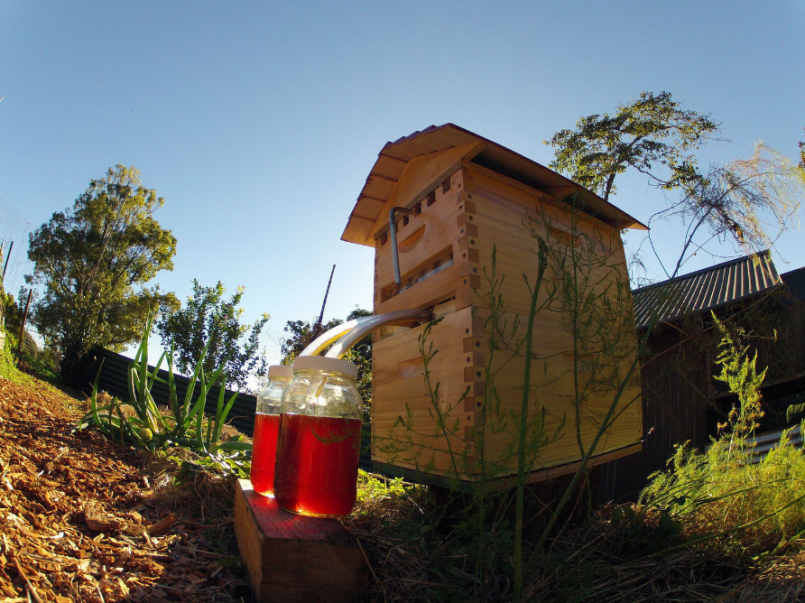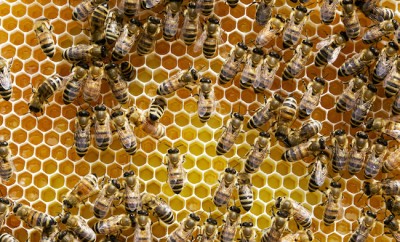Animals
A way to make honey that won’t disturb the bees

Image: HoneyFlow
The invention of the Flow Hive is definitely exciting and one-of-a kind. Just purchase the kit, assemble a few pieces, place the plastic frame inside a conventional beehive exterior, provide the bees, and in a short while you can turn the nozzle and honey will drizzle out of a faucet for you. Australian inventors and beekeepers Stuart and Ceder Anderson arrived at the idea after Ceder started feeling badly about the number of bees accidentally being crushed during his honey harvests, as well as the amount of bee stings he was getting through his beekeeper suit in the process.
How does it work?
Over time and many experimental drafts, the father-son team came up with the Flow Hive, which appears to make beekeeping a cinch. Considered by some to be “the most significant beekeeping invention since 1852,” the Flow Hive’s gentle extraction process appears much less stressful to the bees, and far fewer die from being crushed. The Flow Hive extraction process allows people to see inside the hive to assess when the honey is ready, and then press a lever to shift the hexagonal comb cells to allow the honey to drain from them. Allowing people to harvest honey without opening the hive, and thus making the process mess-free while also not disturbing the bees, could likely lead to the benefit of increased beekeeping endeavors by many, including even urban dwellers. The introduction of beekeeping to people who wouldn’t ordinarily try it could mean great improvements for the bees overall, with increased awareness and appreciation broadening interest in how it is done and how bees are cared for all starting with the first taste of fresh honey made in your own backyard.
Are there any negatives?
However, Flow Hive is not without its critics. One honey maker, Maryam Henein, has expressed that the claim Flow Hive makes that it “doesn’t disturb the bees” is a bit of a stretch. Just because one cannot see the disturbance doesn’t mean it isn’t occurring, Henein asserts. Some have also expressed concerns that the honey will crystallize in the combs during certain months, requiring heating and killing all the healing properties within. In addition, bees don’t prefer the hormone-disrupting plastic combs as they can make their own combs with wax from their abdomens, just like nature intended, which has a key role in the honey-making process. The no-muss, no-fuss approach to beekeeping promoted by Flow Hive also doesn’t encourage close communion between the bees and human caretakers, and has been called by some an “expensive gimmick,” which is only exploitative and does not actually help the bees overcome colony collapse disorder or other problems with systemic pesticides or lack of natural habitat. In fact, some have even expressed concerns that careless humans might end up killing more bees this way than just allowing the professionals and nature to keep at at. Maryam recommends a different approach to activism for the bees: getting involved with Center for Food Safety, sharing the movie Vanishing of the Bees with others, or trying to start doing some real natural beekeeping.
A more neutral perspective on the matter was uttered by Phil Chandler, a natural beekeeper, who offered his professional assessment of the Flow Hive. Chandler stated, “A tool is a tool: an axe can be used for chopping wood or for killing someone. If people are of a mind to exploit nature, then they will find ways to do so. If they learn to appreciate the natural world, then they will treat it with respect, regardless of the tools they happen to be using.” Let’s hope the potential purchasers of Flow Hive will keep these words in mind when they determine whether beekeeping is right for them.




0 comments